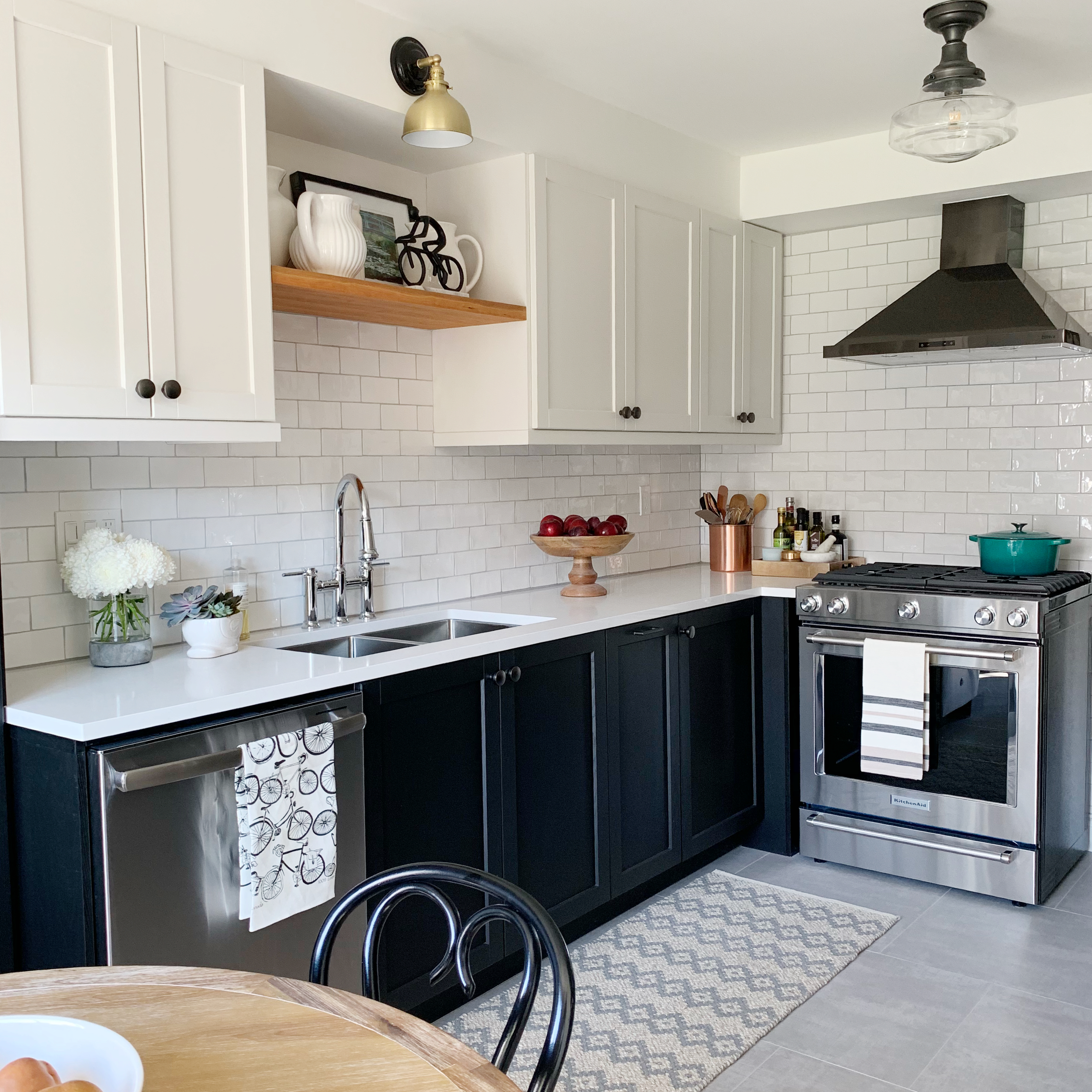
Happy 2019!
Thank you for your support here and on Instagram regarding my sister’s kitchen renovation. It was a labour of love and turned out beautifully. But as with any renovation, it’s not all about the pretty. There are other elements of the design that impact on function and safety. I have partnered with the Electrical Safety Authority (ESA) whose role it is to enhance electrical safety in Ontario. They want homeowners to consider the importance of electrical implications early on in the design process and hire only a Licensed Electrical Contractor. So, just like this post on the electrical considerations for basements, I’m sharing a few design tips related to electrical if you are considering a kitchen renovation. I’ll be referencing not only my sister’s kitchen but my two previous kitchens as well to illustrate my points. You can also visit Power Your Life for more tips.
When planning your kitchen renovation, think first about how you will use the space which will determine the location of electrical outlets and the type of lighting needed. Your Contractor and/or Designer will bring in a Licensed Electrical Contractor early on in the design process and will most likely do a lighting/electrical plan to note the location of electrical and lighting. To make sure they are a Licensed Electrical Contractor, ask for their ECRA/ESA licence number – it should be everywhere. Work with them to think through how you will use your kitchen. Thought and consideration in the early planning stages will ensure no regrets (e.g. “I wish I had added a receptacle here for my espresso maker”) and no additional costs down the road.
With respect to lighting, typically for a kitchen you want enough overall (ambient) lighting either through pot lights or ceiling fixtures. Although we didn’t add pot lights to my sister’ kitchen as we felt it wasn’t necessary, we did improve the lighting wattage and type of light that was already there. We just wrapped up a video with House and Home magazine and one of the things my sister Arlene commented on was how much more light there is in her kitchen. And this past weekend, I experienced my sister’s kitchen at night for the first time and it was lit perfectly and reinforced the decision to forgo pot lights.
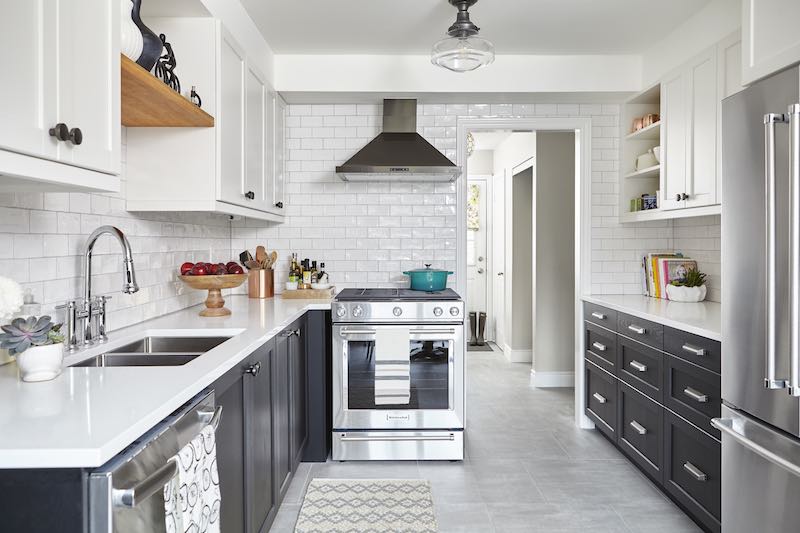
Next, kitchens require task lighting which illuminates a work area. This usually means lighting over an island, above the sink, above the range and under cabinetry. I think all of these are warranted in most scenarios. The former two are the more decorative ones which will impact the look and feel of your kitchen the most while the latter are inobtrusive but serve a very important function. Each type of lighting should have its own switch (preferably on dimmers) so that you can vary the lighting affecting the look and feel of the kitchen.
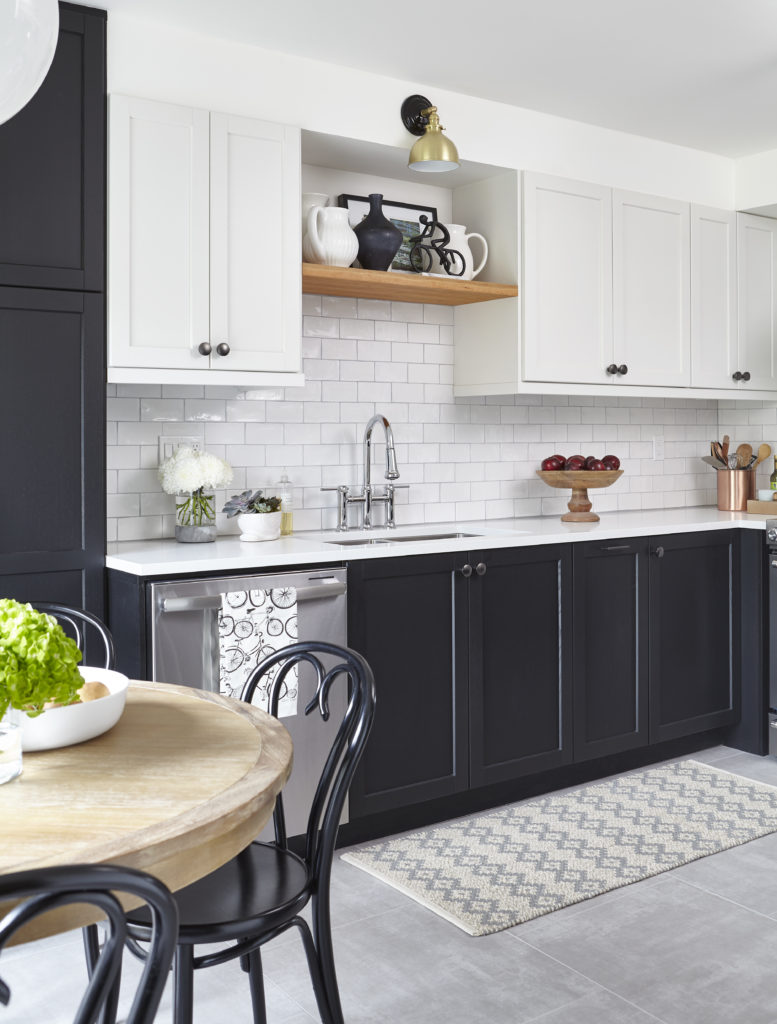
I see pendants over an island as statement lighting and I always err on the side of large as opposed to small fixtures. Pendants are typically hung 33-36″ above the counter. In my kitchen (below), the bottom of the fixtures are 35″ above the counter. I have 9′ ceilings so the scale of the lighting works, whereas if you had an 8′ ceiling, they would definitely be too large.
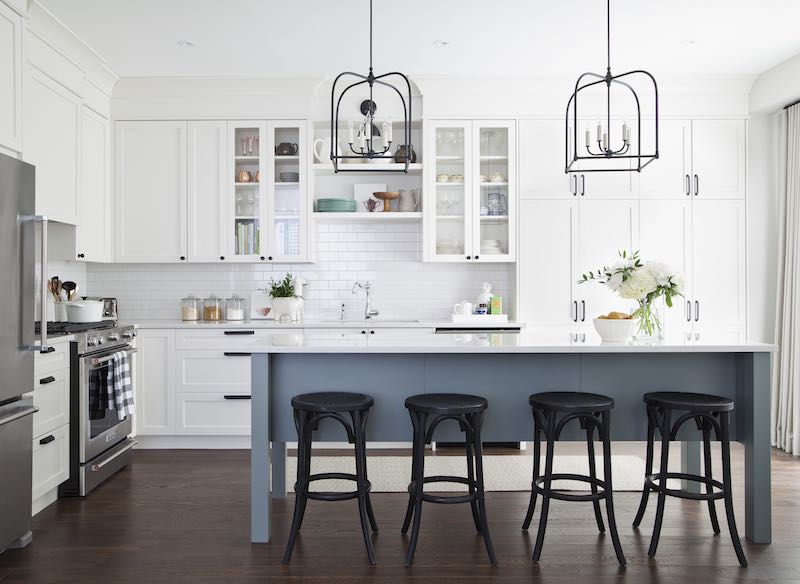
The 33-36″ rule also applies to lighting above a dining table and in this case we hung the 16″ globe pendant (again, oversized) 37″ above the table. We went slightly higher as it looked more visually appealing at that height. There are standards to this but also what appears pleasing to the eye when onsite also plays a part.
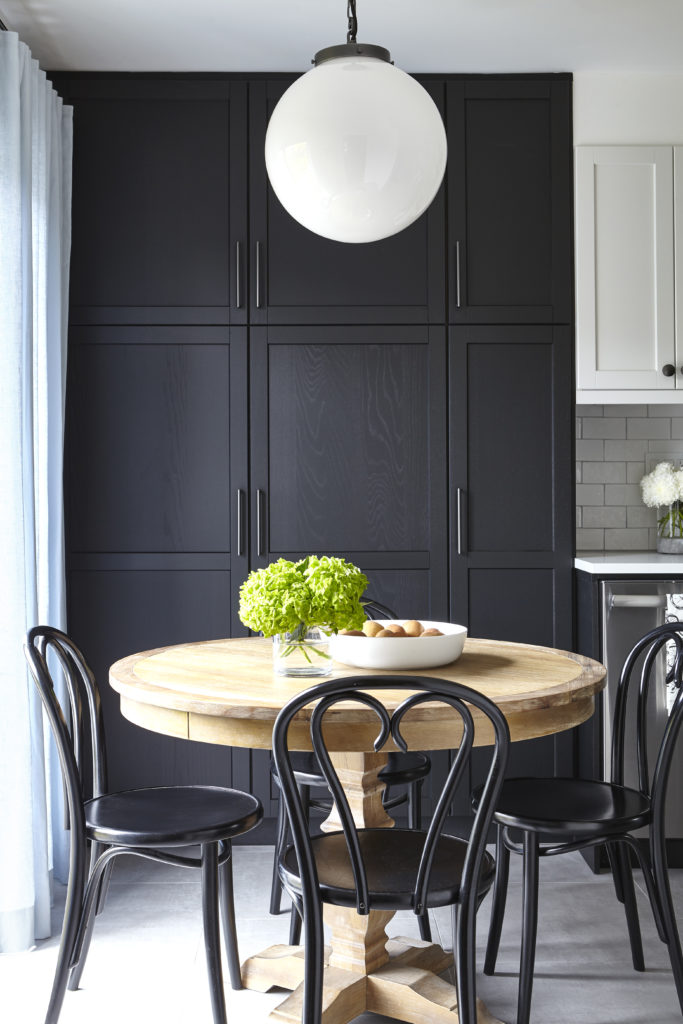
Wall sconces above a sink can also be an opportunity to add a beautiful fixture in a contrasting metal to add some personality. And under cabinet lighting have come a long way since the fluorescent tubes of yesteryear. Now, linear LED lighting provides a softer light, is sleek in appearance and are dimmable. This was a must in my sister’s kitchen and I have under cabinetry in mine but have to admit, I never turn them on. Maybe as my eyesight worsens with age, I will!

Most appliances in a kitchen require their own electrical outlet but in addition some appliances such as an induction cooktop require a significant electrical load and will need to be on a dedicated circuit. Also, keep in mind that Ground-Fault Circuit Interrupter (GFCI) outlets are required for any outlets located 1.5 metres from a sink to help prevent shocks from water. Your Licensed Electrical Contractor will make sure every last electrical detail is done according to the Ontario Electrical Safety Code.
You may also want to run your electrical outlets horizontally and lower to the counter like I did here in my former kitchen. It mimics the subway tile and looks more aesthetically pleasing.
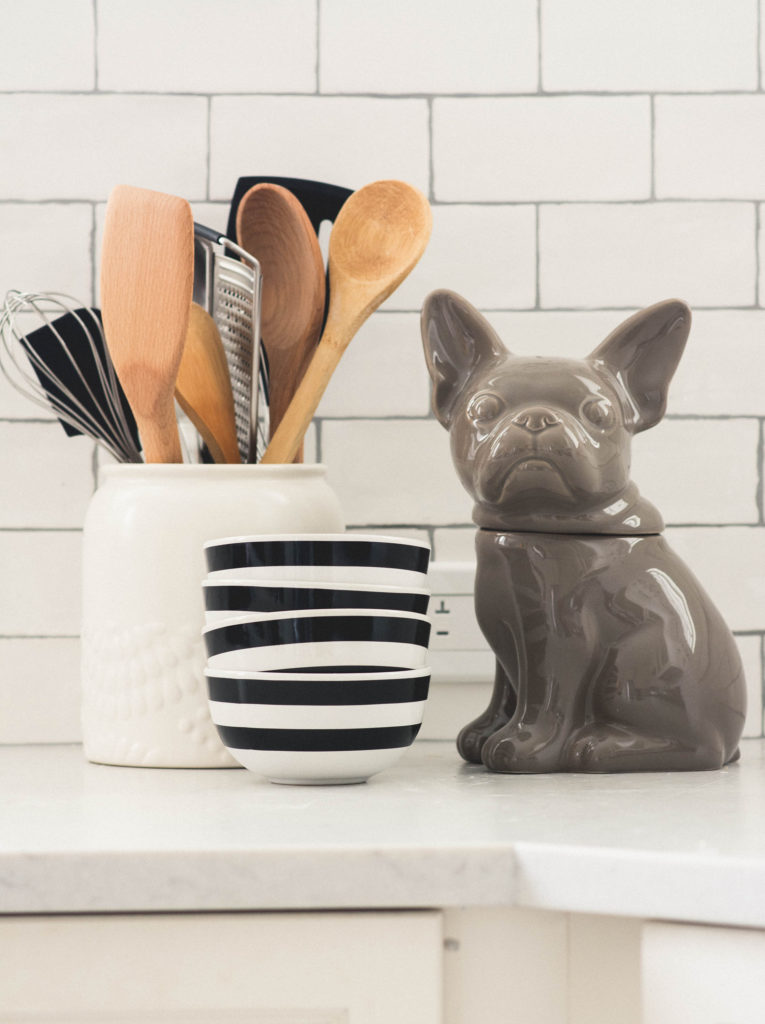
And you can’t see it behind the accessories, but we added USB outlets to charge our phones in my kitchen. It’s quite common to add these outlets within drawers (regular electrical outlets cannot be within a drawer unless they have an interlocking switch that shuts off the power when the drawer is closed) as well so definitely think about this during the planning stages.
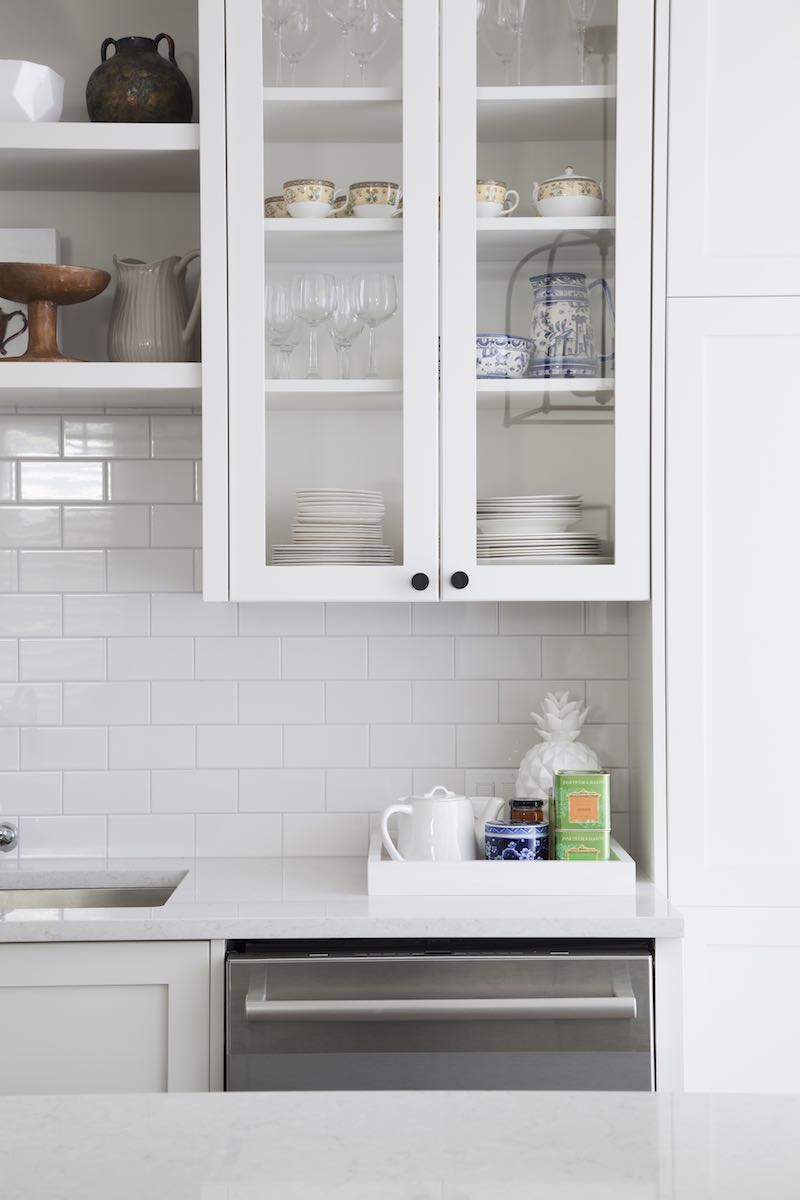
There is so much to think about with respect to electrical when renovating a kitchen and starting early in the design process is key. And whether you’re hiring a Licensed Electrical Contractor directly for the electrical work in your kitchen or having your general contractor or designer hire subcontractors for you, make sure the electrical contractor is licensed – it’s the law in Ontario. You can check the ESA website to see if your electrician is licensed.
Happy Renovating!
{Disclosure: This post is sponsored by the Electrical Safety Authority but all opinions are my own.}

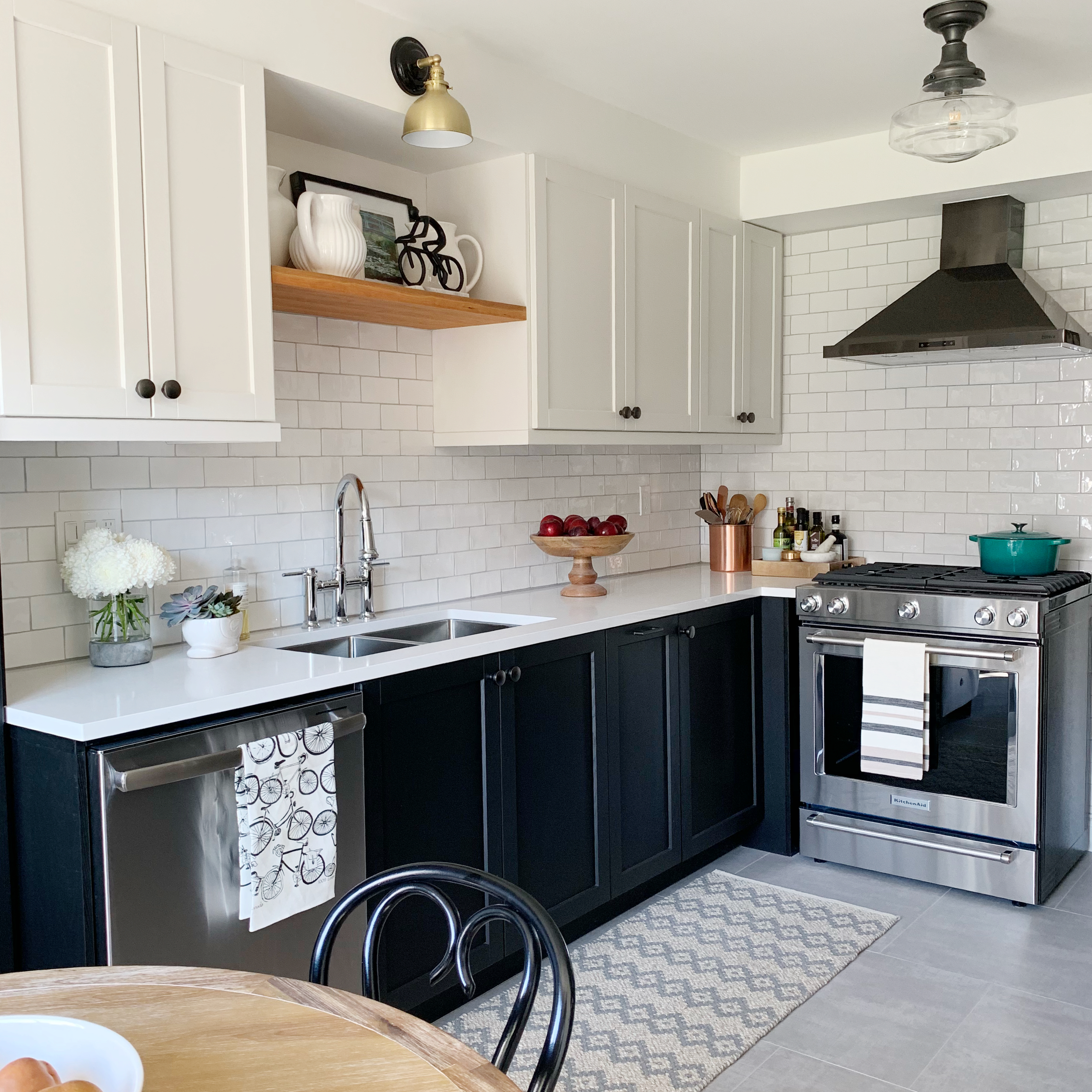












Julie
February 6, 2019Good article! You did a great job on this kitchen. Can you tell me where the table came from? I’ve searched through your other posts but couldn’t find this info. Thanks!
Danella Bunton
February 25, 2019I saw one very similar on Pottery Barn website.